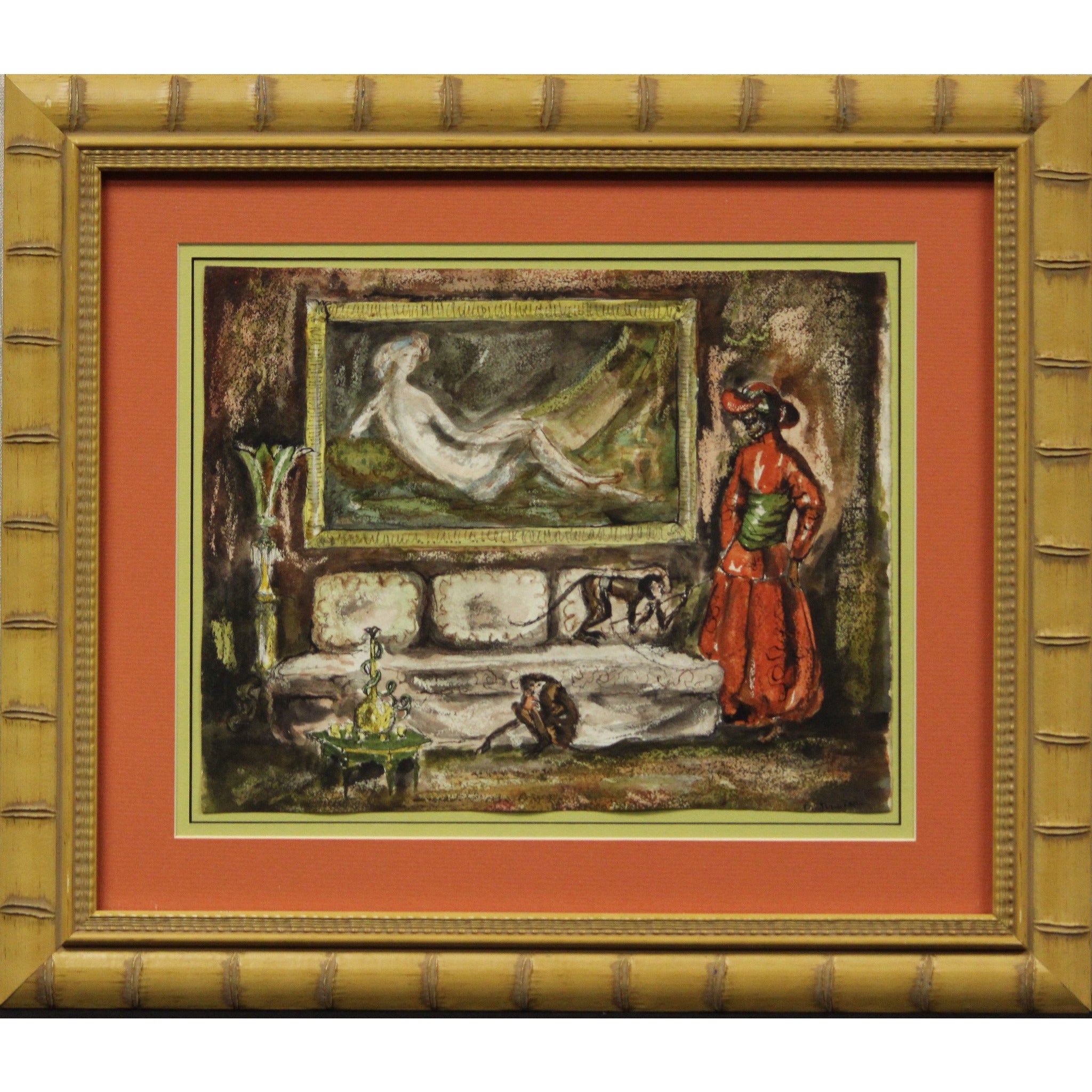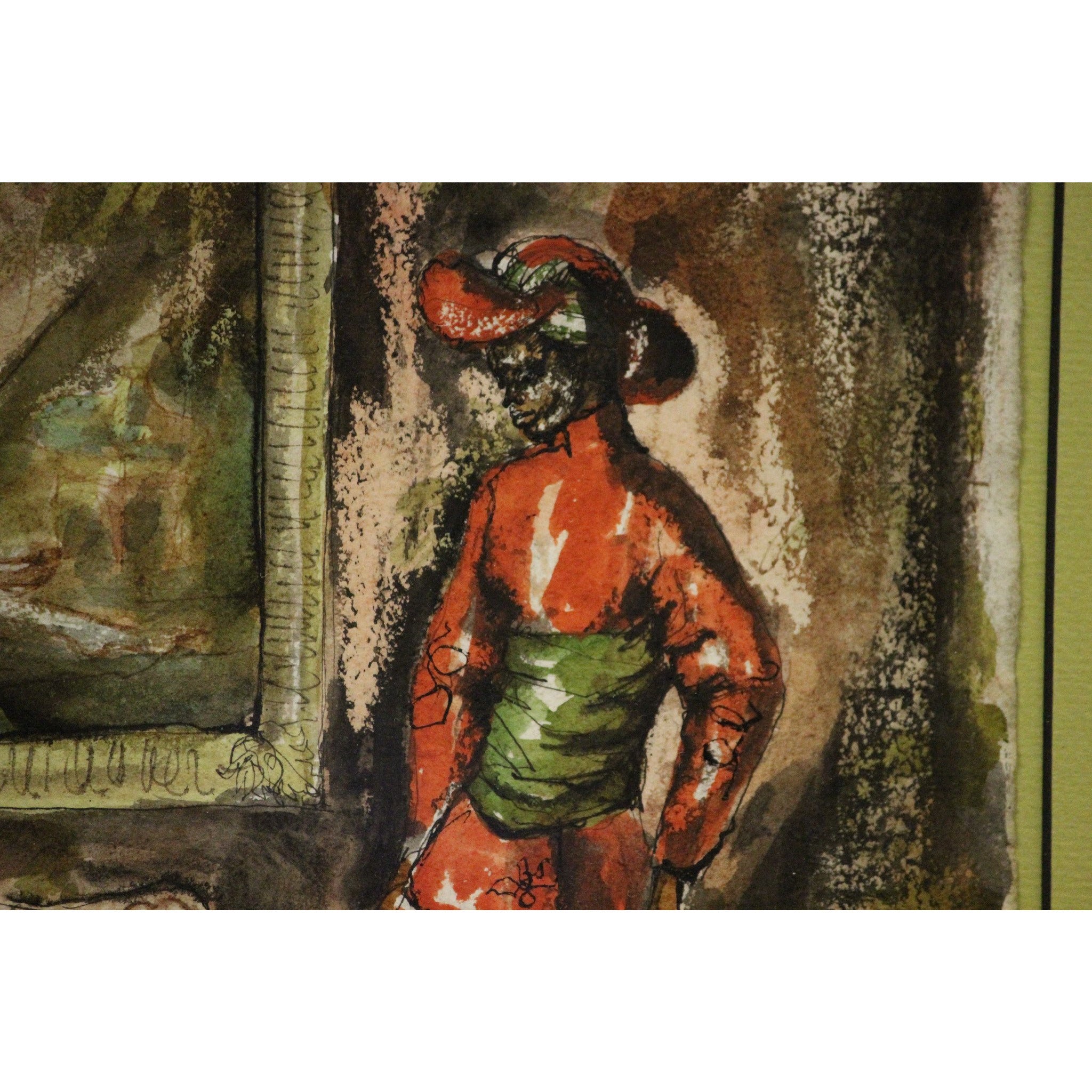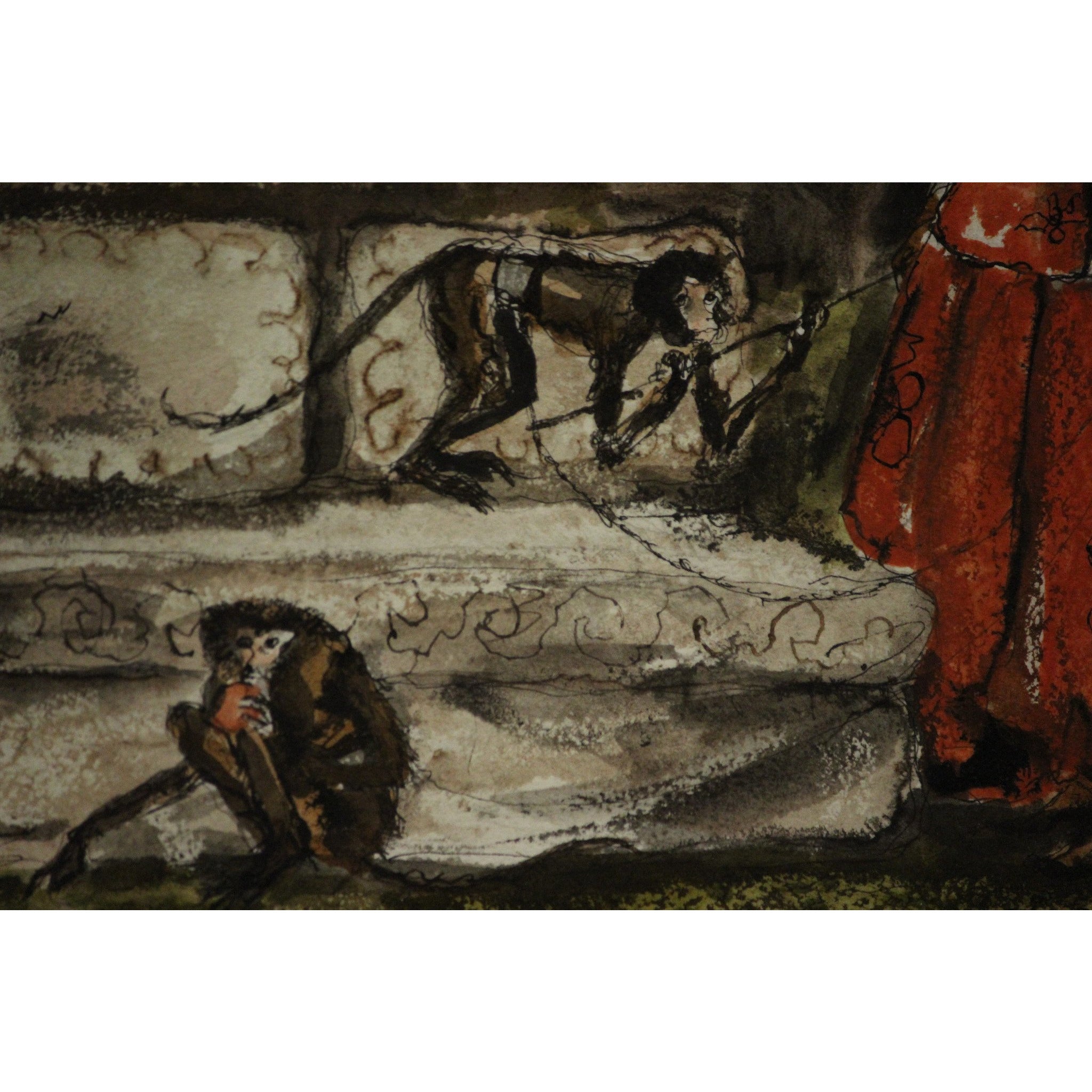Philippe Jullian Orientalist Watercolor Interior Ex- D.D. Ryan Estate
$4,800
Rare, original Philippe Jullian (1919-1977) (ink signed LR) mixed media depicting a lavish Moorish opium salon interior with a reclining nude portrait on the wall and two monkeys with their turban clad boy.
Sagittarius Gallery, NY label inscribed Jullian No. 18 on verso
Provenance: The estate of D.D. Ryan (1928-2007), noted fashion editor at Harper's Bazaar, an associate of Halston and a regular on best-dressed list.
Art Sz: 8 3/4"H x 11 1/8"W
Frame Sz: 16"H x 18"W
w/ Hermes orange mat & antique bamboo frame
D.D. Ryan, a fashion presence who was an editor at Harper’s Bazaar, an associate of Halston and a regular on best-dressed lists, but whose most widely appreciated achievement was helping to give birth to Eloise, the fictional little girl who lives at the Plaza Hotel, died on July 24 in the Bronx. She was 79.
Eloise began as a character that Kay Thompson, a cabaret singer, portrayed to amuse her friends, of whom Ms. Ryan was one. Ms. Ryan urged her to write a book, put her together with Hilary Knight, the illustrator, and never stopped pushing her to finish the job. The result was “Eloise,” published in 1955 and a best seller the next year, and its continuingly popular sequels.
“The book would never have existed without D. D. Never,” Mr. Knight said in an interview Thursday. “She would have just dropped it and gone on to something else.”
Beyond her historic Eloise moment, Ms. Ryan thrived at the crossroads of New York’s fashion and artistic worlds, seeming to make a statement every time she dressed, almost always in clothes she made herself, always recognizable with her famous precisely stylized eyebrows.
Her first job in Manhattan was as an assistant to the photographer Richard Avedon; she was photo editor at Harper’s Bazaar under the legendary editor Diana Vreeland, and she designed the costumes for Stephen Sondheim’s 1970 Broadway musical “Company.”
Her social circle included Cole Porter, Andy Warhol, Mr. Sondheim and Truman Capote. When she recommended a new pair of sandals or a piece of costume jewelry — only “really good costume jewelry,” she specified in an interview with The New York Times in 1981 — her opinions were noted.
Dorinda Prest Dixon was born in Bristol, R.I., on June 26, 1928, and soon became known by her first and last initials. She attended the Wheeler School in Providence, R.I., and Finch College, which closed in 1975. She moved to New York in her late teens or early 20s and got a job assisting Mr. Avedon. Ms. Vreeland hired her as an assistant, her son said, and she advanced to photo editor.
Artist Bio:
One of his first officially noted works was the first "artist's" label for the famous wine from Château Mouton Rothschild in 1945, in memory of the World War II victory over Germany.
Jullian's book illustrations are witty, ornate, and often grotesque. He produced illustrations for his own books as well as works by Honoré de Balzac, Colette, Fyodor Dostoevsky, Ronald Firbank, Marcel Proust, and Oscar Wilde, among others. His books and articles on Art Nouveau, Symbolism, and other art movements of the fin-de-siècle helped bring about a revival of interest in the period. These include the biography Robert de Montesquiou (1965), Prince of Aesthetes (1967), Esthétes et Magiciens (1969) translated as Dreamers of Decadence (1971), Les Symbolistes (1973), and The Triumph of Art Nouveau (1974). Among others, he admired French painter Antonio de La Gandara. A collector, he published his autobiography, La Brocante, which detailed the "love of small objects," in 1975.
Works of fiction by Jullian dealt with the decadent, sensual, and macabre. He explored the themes of homoeroticism, sado-masochism, transvestism and the aesthetic life. His gift for satire is evident both in fiction such as La Fuite en Egypte (1968; published as The Flight into Egypt, 1970) and in his works of social satire, including Dictionnaire du Snobisme ("The Snob-Spotter’s Guide," 1958), Les Collectioneurs ("The Collectors," 1967), and most notably his collaboration with the British novelist Angus Wilson, For Whom the Cloche Tolls: A Scrap-Book of the Twenties (1953), which he also illustrated.
Other books include Montmartre (1977) and Les Orientalistes (1977), works of art history; and biographies of Edward VII (1962), Wilde (1967), Gabriele D’Annunzio (1971), Jean Lorrain (1974), Violet Trefusis (1976), and Sarah Bernhardt.


